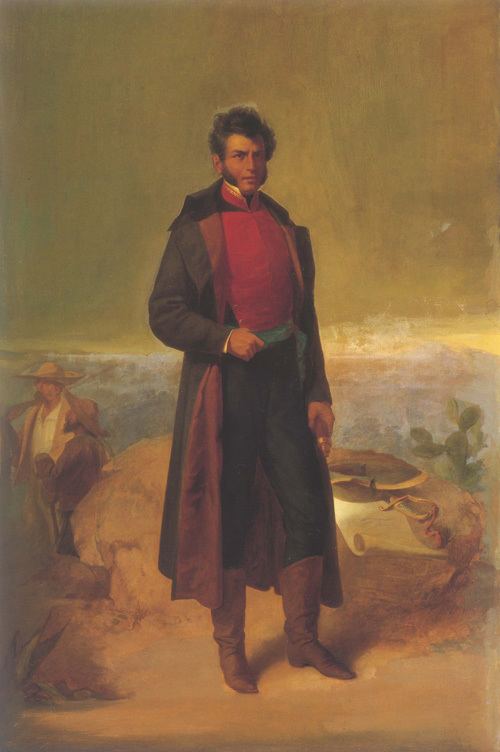Nationality Mexican Known for Painting, photography Education Academy of San Carlos | Name Ramon Sagredo Role Artist | |
 | ||
Born 1834 Real del Monte, Hidalgo, Mexico | ||
Ramón Sagredo (1834–1873) was a 19th-century Mexican painter and photographer who worked under the patronage of Emperor Maximilian and decorated the former cupola of "La Profesa" with the Catalonian master Pelegrí Clavé.
Trained at San Carlos Academy from 1854 to 1859, he received praise for his Jesus on the road to Emmaus (including a positive review by Cuba's national poet José Martí). Under sponsorship of Maximilian of Mexico, he went on to decorate Iturbide Hall at the Imperial Palace (current Ambassador's Hall at the National Palace) with a full-length, posthumous portrait of Vicente Guerrero. He also worked with Clavé on the former cupola of La Profesa (ravaged by a fire in January 1914) and at San Carlos' galleries.
By the end of the Reform War, his personal finances were dwindling. Following the example of many of his contemporaries, he ventured into photography by painting over photographic enlargements for a fraction of the cost of paintings. According to an 1862 newspaper article quoted by Oliver Debroise:
[Ramón Sagredo and other artists] sacrificed their best years and resources to a most beautiful art that is, unfortunately, little appreciated [...] Consequently, they have abandoned those studies that cost them so dearly [...] Today they contribute their talents and the fruit of their long vigils to the profit of photographers who, employing them in the coloring of photographic portraits for the paltry stipend of one-third of their value, take advantage of the labor of these former students of the Academy.
Later on, as a photographer, he formed short-lived associations with Luis Veraza (1864), for whom he started coloring at Espíritu Santo 17 ½; and the Valleto brothers (Sagredo, Valleto y Ca.,1865) at Vergara 7, before setting up his own studio in the Mexican capital.
The details of his death are rather murky. According to most sources, he committed suicide on 2 July 1872 while San Carlos' galleries catalog, according to Abelardo Carrillo y Gariel, places his death in 1873.
